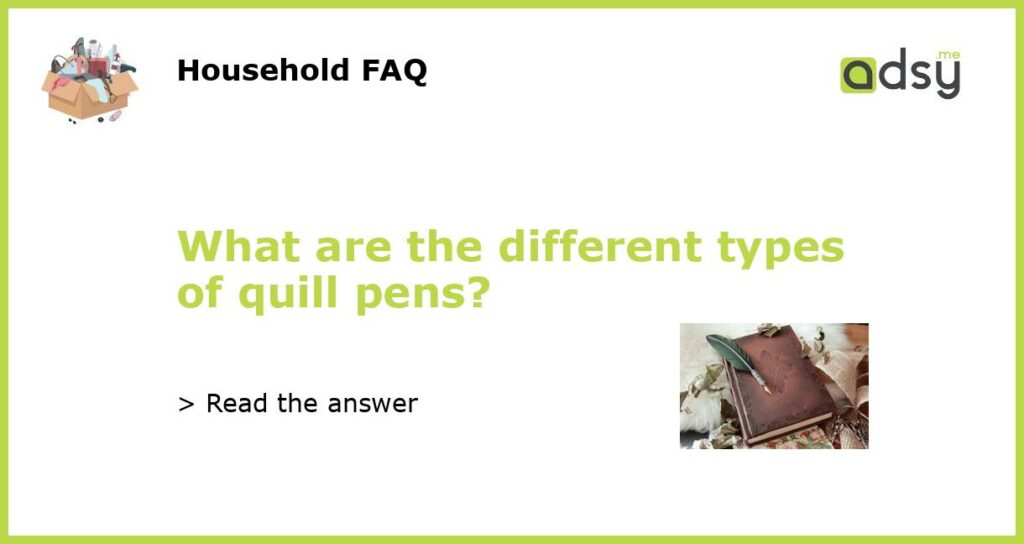A quill pen is one of the oldest writing instruments that date back to the 6th century. It is more reliable than any other pens as it does not dry out, and it has a consistent flow of ink from the tip to the page. Quill pens have been used by scholars, authors, and businesses for writing letters, manuscripts, and documents. But what are the different types of quill pens, and how do they differ?
Feather Quill Pens
The feather quill pen is the most common type of quill pen. The feather of a bird, usually a goose, is cut and trimmed to form the nib and the shaft. The nib is then sharpened, and a small slit is made at the tip to allow the ink to flow. Feather quill pens are easy to make, especially since feathers are readily available.
Glass Quill Pens
Glass quill pens are made of glass and are becoming increasingly popular because they are easy to clean and can be used to write with various colors. They come in different styles and shapes, but all have a glass nib. You can use glass quill pens with any ink, but some manufacturers suggest that the ink should be thinner to flow easily over the glass surface.
Metal Quill Pens
Metal quill pens are durable and long-lasting but can be quite expensive. They are made of metal, usually copper or brass, and have a nib that is similar to the feather quill pen. Metal quill pens can be used for calligraphy, drawing, and handwriting.
Bamboo Quill Pens
Bamboo quill pens are made from cut bamboo, which is a sustainable material. This type of pen is eco-friendly and is easy to find. The bamboo nib is very flexible and can create different thicknesses of lines. Bamboo quill pens are best for casual writing and can be used with various types of ink.
Overall, quill pens offer a unique writing experience that cannot be duplicated by other writing instruments. Depending on your personal preference and style of writing, different types of quill pens may work better for you. Experimenting with each type might lead you to find the one that suits you best.






